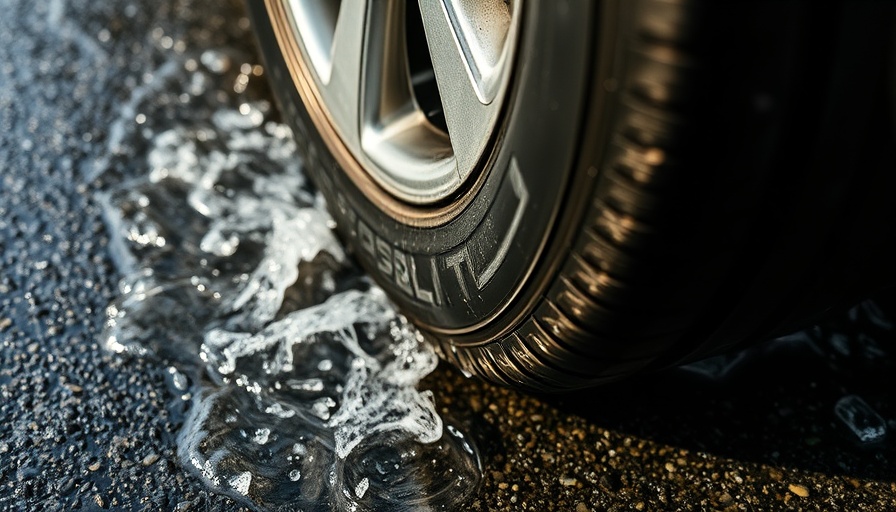
Understanding Hydroplaning: A Quiet Yet Dangerous Potential
Imagine cruising down a rain-slicked highway when suddenly your vehicle begins to drift like a leaf on water. This alarming phenomenon, known as hydroplaning, occurs when your tires lose contact with the road due to water accumulation. The contact patch of a tire—roughly the size of your palm—can easily be overwhelmed, reducing control and increasing danger.
What Causes Hydroplaning?
Hydroplaning occurs when tires become saturated with more water than they can clear away. As explained by defensive driving expert Robert Dillman, when water builds up beneath your wheels, a "water-on-water" surface forms, causing your tire to lose grip. Not just limited to rain-soaked roads, hydroplaning can also happen on surfaces with mud or snow.
The Dangers of Hydroplaning: What You Need to Know
Hydroplaning shares a chilling similarity with driving on ice; tires gliding over water compromise steering, braking, and acceleration. Thus, regaining control becomes a daunting challenge, making hydroplaning a formidable hazard for drivers. Understanding its top causes can significantly reduce your risk on the road.
Key Causes of Hydroplaning: Awareness Is Key
Recognizing the top dangers that lead to hydroplaning is the first step in prevention. Here are some common contributors:
- Water Accumulation: The most prominent factor, excess water on roads, can lead to hydroplaning. Pay close attention to standing water or flooded streets.
- Oil Slicks: After dry spells, oil can coat the road surface. The initial rain can create a slippery layer, making the road treacherous.
- Speed: Driving too fast for rain or wet conditions decreases your tires' ability to clear water, increasing the risk.
- Tire Condition: Worn or under-inflated tires can't effectively move water away from the tread, making them more susceptible to hydroplaning.
- Road Conditions: Smooth surfaces lacking texture or good drainage can retain water and exacerbate hydroplaning risks.
Hydroplaning Prevention: Practical Tips for Safety
Being informed about hydroplaning dangers is critical, but knowing how to prevent it is just as important. Here are actionable insights to enhance your safety:
- Maintain Tire Health: Regularly inspect your tires for wear and ensure they are properly inflated. This simple act can be pivotal in keeping you safe.
- Slow It Down: Adjust your speed according to weather conditions, particularly in wet weather. Driving at appropriate speeds can give your tires the chance to maintain traction.
- Stay Calm When Hydroplaning: If you feel your vehicle beginning to hydroplane, refrain from sudden movements. Instead, keep your steering wheel steady and ease off the accelerator to regain control.
How Can You Protect Yourself from Hydroplaning?
Being equipped with knowledge about hydroplaning not only protects you but can also safeguard other drivers. Taking preventive measures can make all the difference when it matters the most.
Future Trends: In-vehicle Technologies for Hydroplaning Dangers
As we advance in technology, new automotive features are emerging that can assist in preventing hydroplaning. Features such as traction control, anti-lock brakes, and dynamic steering systems work in tandem to maintain grip on wet surfaces. Familiarize yourself with your vehicle’s safety technology, and actively engage them to enhance your driving experience.
Conclusion: Be Proactive in Experiencing a Safer Drive
With the summer months often bringing unpredictable weather, it's essential to remain vigilant about safety on the road. Drivers can protect themselves by understanding hydroplaning and utilizing preventive measures. As you embark on your next drive, remember to check your tire conditions, stay attentive, and adjust your speed. Safe travels pave the way for enjoyable journeys.
 Add Row
Add Row  Add
Add 




Write A Comment